Clay Chronicles Series
I didn’t want to make another bowl or jar this time, so I took inspiration from this beaker/bottle form recovered from Shell Creek, in Lee County:
Safety Harbor Incised Pottery, ca. 1100 – 1500 AD
The clay I used is from a potter friend’s farm in Piedmont North Carolina. Brenda makes historically-inspired pottery and has used the clay to make a glaze. It’s got a lot of naturally-occurring grit, which means large particles of rock. Grit is one of the possible temper types for Safety Harbor pottery, so I wanted to give working with it a try. However, a clay with lots of grit is like crunchy peanut butter. It’s very difficult to smooth it out and create an even surface.
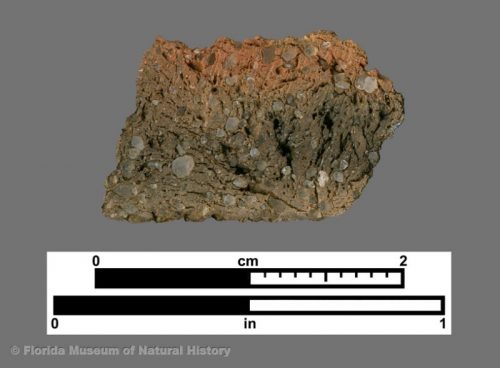
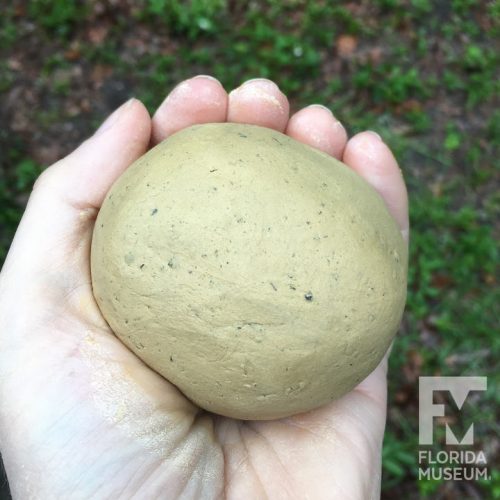
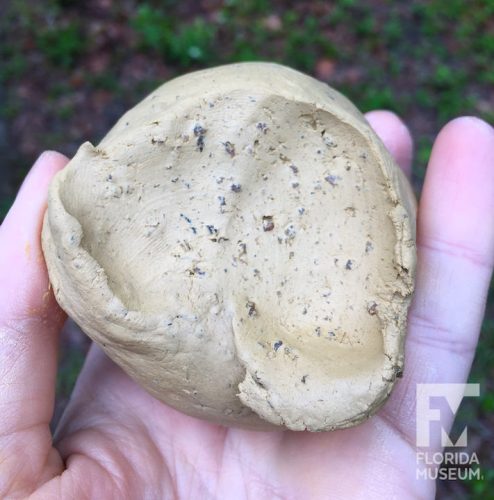
The process of making this bottle was a bit different than with earlier pots. I made the globular base by ballooning out a small ball of clay by pinching. This is the easiest way to make a round shape that comes back in at the top. Once the bottom had set up a bit, I could begin building the top. I used very thin coils this time because I wanted to have straight sides. The thicker the coils, the more the clay will widen out as you thin it. Once I had built up to the height I wanted, I added a final coil to the rim and smoothed the whole exterior.
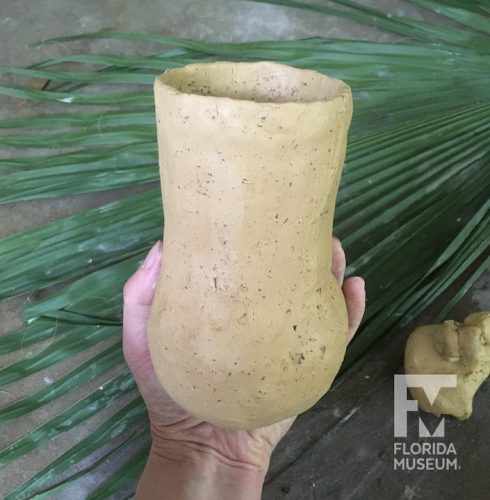
On some of the archaeological examples, the banding on the neck was made by the coils themselves, leaving them unsmoothed on the outside. I may try that next time, when I’m working with a clay that is a bit more friendly.
By the next day, it was dry enough to decorate. Using a wooden tool, I added the diagonal lines/impressions to the bottom, and then incised the horizontal lines around the neck. Because of the grit, the lines are not very even and I’m okay with that. Often replicas are made perfect, and while they are beautiful, they look too good. Ancient pottery has lumps and bumps and irregularities, so mine will too.
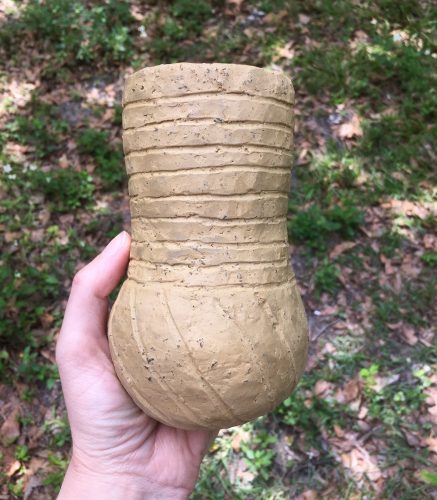
You can watch the whole process here: